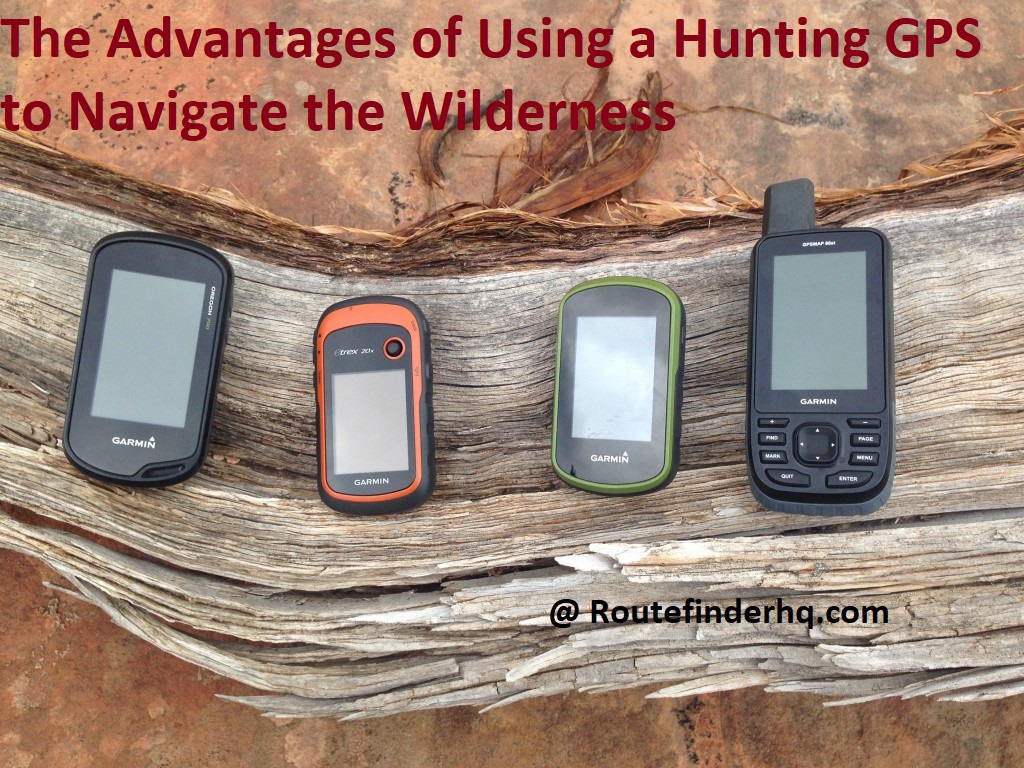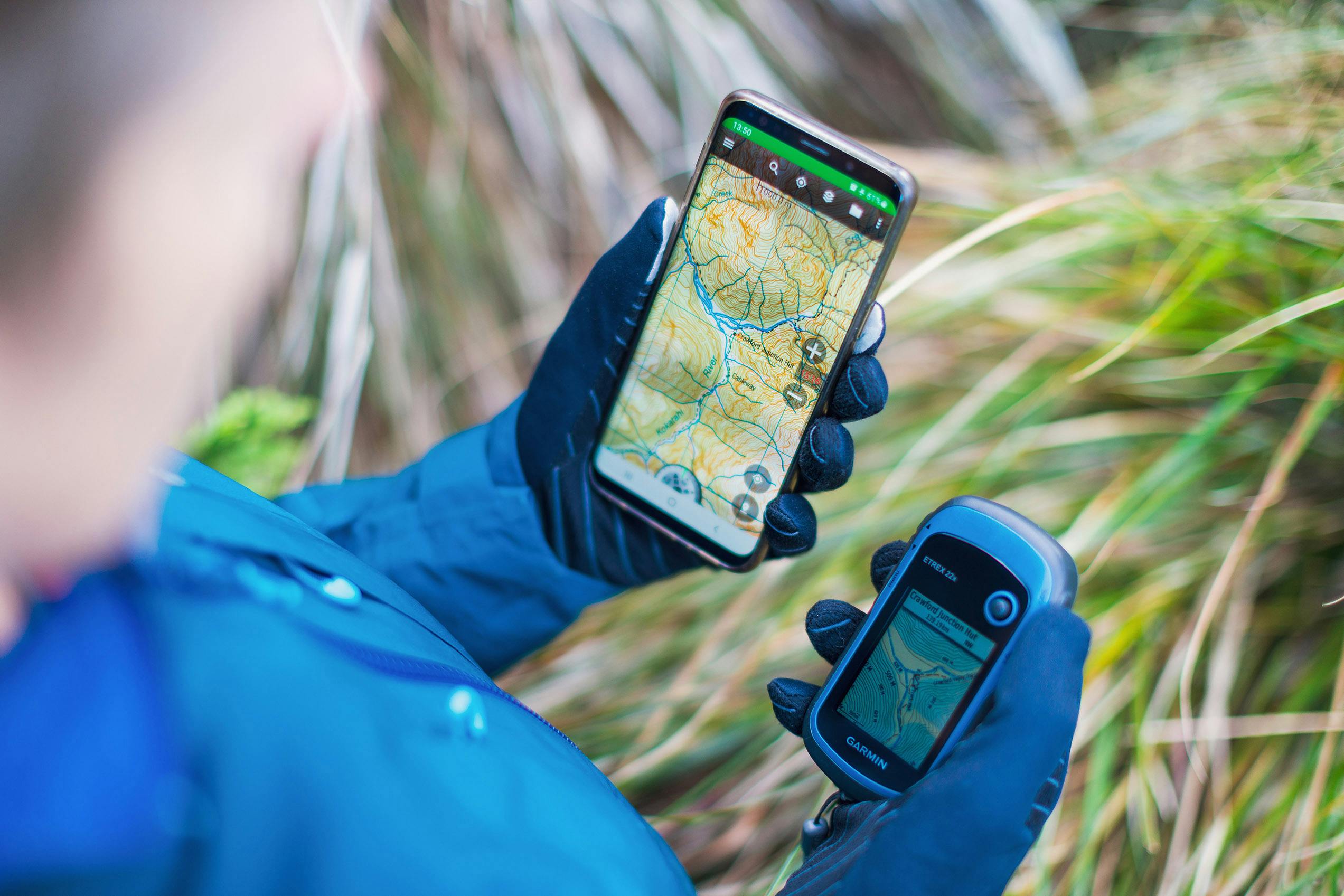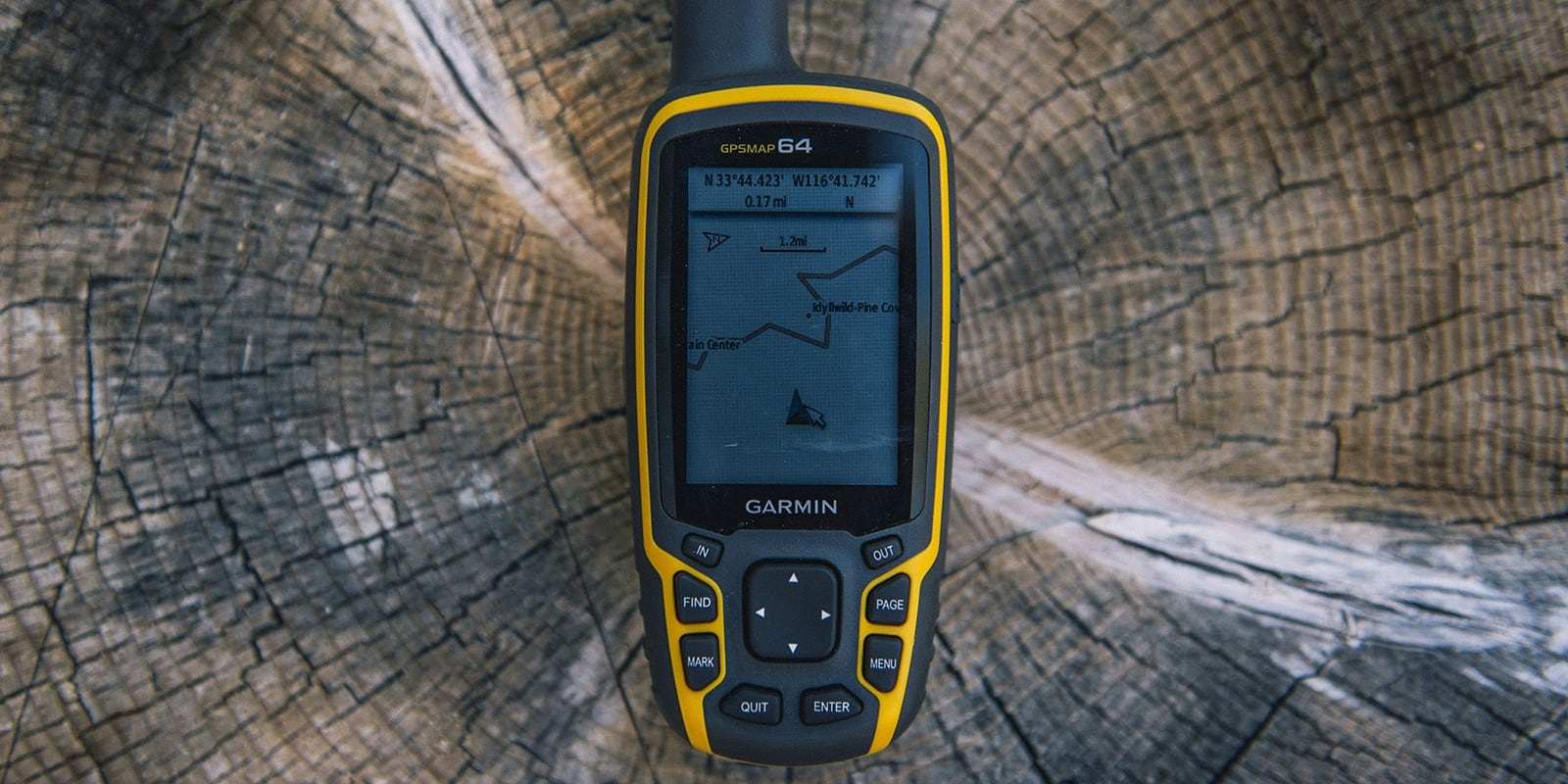Are you an outdoor enthusiast looking for an efficient way to explore the wilderness? If so, using a hunting GPS might be the perfect solution for you. It offers countless advantages, from navigation to tracking your game’s movements – making it easier for you to plan and enjoy your excursion.
Read on to learn more about why you should use a hunting GPS!

When it comes to navigating the great outdoors, a hunting GPS can be a valuable tool to help you find your way around. Not only do they provide accurate directions and maps, but they also track game so you’re sure not to miss out on any opportunities. If you’re an avid outdoorsman, then this guide is for you! Here we cover all the advantages of using a hunting GPS to navigate the wilderness and provide tips on how to make the most of this technology for successful and safe hunting trips. Learn about why you should use a hunting GPS, what features and functions are available, how it works, and some tips on how to get the most out of your device. Ready to get started? Let us begin!
Advantages of using a hunting GPS to navigate
Using a hunting GPS makes it easier to track your progress while hunting. The GPS allows you to create a map of the area with detailed topographic information that shows where you have been and where you are going. With specific coordinates, the GPS will provide navigation points so you can easily get back to where you began your hunt.
The tracking also gives an up-to-date location of all targets so that you can quickly and efficiently find what wild game is nearby. These functionalities make it easier for hunters to focus on their hunt, without having to constantly check in with their surroundings or surroundings for landmarks for navigation assistance. This saves time and allows for a more efficient hunt, as well as reducing the likelihood of getting lost in unfamiliar areas.
Accuracy
GPS helps you stay on target course with greater accuracy and reliability in the wilderness. It functions by utilizing satellite signals that penetrate most of the environment, ensuring precise navigation.
Many devices designed for hunters come equipped with a map overlay and cartography features that provide an exact geographic bearing to help you stay within proper hunting boundaries and avoid areas populated by non-hunt-friendly people or animals. In addition, GPS units can also work with other devices such as rangefinders to help make more accurate shots from longer distances than ever before.
Additionally, some models come with mapping software that will enable you to create tracks of where you have been which can be shared or stored to review or compare at a later time.
Ability to pinpoint exact location
Knowing your exact location in any situation is a huge advantage, especially in the wilderness where elevation changes, terrain, and other elements can throw off ordinary navigational methods.
A hunting GPS allows you to pinpoint your exact coordinates and easily mark points of interest or potential hazards so that you can find your way back home. It can also be used to plan out a specific route beforehand and give information about the landscape such as altitude and terrain features. This makes planning easier and helps minimize surprises later on down the trail.
Additionally, GPS devices are able to provide information about public land boundaries and certain prohibited areas as well as animal migration paths or waterways which come in handy when scouting out game ahead of time.
Precise tracking of movement
A hunting GPS is perhaps the most important tool that a hunter needs to navigate the wilderness. This device allows you to accurately track and pinpoint your exact location, making it easier and much more accurate to travel through unfamiliar terrain. With a good GPS unit, you can keep track of your exact position at all times with the help of GPS coordinates.
You might think that relying on traditional methods like maps and compasses will do the job – they do – but they’re not nearly as precise as GPS devices are. For example, if you were lost in an unfamiliar area, it would be difficult to determine exactly how far away you were from where you started out without a reliable tracking method. A hunting GPS ensures that you can always find your way back home without any issues.
Furthermore, depending on their features, some modern-day GPS units come with several customizable tracking options that allow you to save markers for significant points such as camping locations or water sources along your journey. This ensures that no matter how much time has passed, you are never really lost because these markers make it easy for you to retrace your steps and get back on track quickly.
Convenience
Using a GPS unit for hunting is much more convenient than having to rely on natual landmarks and printed maps. Physical maps that contain detailed information about the terrain can be extremely heavy and bulky, making them both difficult to haul around and easy to damage while in the field. On the other hand, a small, lightweight GPS unit allows you to keep your hands free while navigating and can provide up-to-date data including your exact location and points of interest such as campsites or game trails.

In addition, it’s quick and easy to change your route if needed in order to stay safe as conditions change. With its portability, convenience, and ease of use, a hunting GPS is an invaluable tool for any hunter out in the wilderness.
Ease of use
GPS units designed for hunting have a number of advantages over traditional navigation techniques such as map and compass. With today’s technology, even the most novice user can easily learn to use a hunting GPS quickly and effectively for better navigation in the field.
Many hunting GPS models feature easy-to-use menus, intuitive buttons and knobs, tactile controls for tone selection, vibrating alerts when you’ve hit preprogrammed key locations and an audible beep so you can keep track of your position in realtime. Plus, many newer models are waterproof to protect from unexpected weather or terrain changes while out in the field.
A bright backlit display is also especially important when trying to navigate in changing light conditions such as early morning fog or setting sun.
Ability to save and share locations
Having a reliable hunting GPS can make navigating in a wilderness setting much easier. The ability to save and share locations, in addition to the various navigational features, provides an invaluable resource when venturing into unknown terrain. These GPS units are equipped with innovative features that will help you record and accurately document your travels.
A handheld hunting GPS allows you to save waypoints along the route of your journey so that you can easily refer back to them later. The map view makes it easy to visually observe your travel path as well as view any saved waypoints at any time. This gives you more control when planning out future expeditions since you can study and plan routes by referring back to previous navigation data. You can also save crucial information such as game stand locations or food caches for reference when planning future trips, allowing for more sophisticated scouting before heading out into the field.
In addition, if your GPS unit is equipped with wireless communication functions, you can easily send location data from one device to another or even share it via social media with friends and family members who have similar models of the same brand or compatible devices from other brands. Also, with certain models of Garmin handhelds featuring “Live Tracking” functionality, users are able to broadcast a continuous track point of thier location so that other users on their friend list will be able to see exactly where they are as they travel through the wildeness – perfect for tracking multiple members during large group trips!
III. How to use a hunting GPS
Using a GPS device is a great way to navigate your way through the wild in search of game. To use a hunting GPS effectively, there are several steps you should follow.
First, be sure to enter your destination location as accurately as possible in order to ensure that you are heading in the right direction. GPS devices rely on information from satellites, so being precise is important.
Next, invest in the most up-to-date and accurate maps for the area that you plan to hunt. Some GPS units come with preloaded maps but it may be beneficial to purchase additional ones that offer even more detail or contain updated information about the terrain for which you will be hunting.
Thirdly, use different navigational tools when utilizing your device’s mapping system and make sure that you get familiar with these before venturing out on your hunt. Features such as symbols, lines and arrows can indicate various points on the map and can help guide you to where game may often be found. Be sure to also look out for useful features such as altitude levels or areas of interest like campgrounds or water sources so that you can gain extra insight on local landscape conditions when deciding where to locate yourself while hunting.
Finally, utilize any additional tools which come with your device such as compasses or tracking features in order receive more specific directional guidance throughout your expedition. By taking time to familiarize yourself with these tools ahead of time, you will save yourself time and energy while traversing the wilds!
Pre-trip preparation
Before you head out on any hunting adventure, it is important to make sure that you are properly prepared. Taking a handheld hunting GPS is a great way to ensure that you know where you’re going and can return home safely. Here are some tips for getting the most out of your GPS unit:
- Make sure your device is loaded with the correct maps and navigation software, as well as all of the necessary accessories like antennas, batteries, and chargers.
- Ensure that your GPS unit is set up properly so that it works flawlessly with your navigation software.
- Learn how to mark important points on the map such as buildings, roads, trails, and bodies of water.
- Test all of your equipment before leaving for your trip so that you know everything will work correctly when needed most in an emergency situation such as a sudden change in weather or a natural disaster.
- Re-check all information before embarking on any trip; make sure everything is operational and accurate according to current conditions in the area you will be visiting.
Downloading maps
Downloading maps is one of the greatest advantages of using a hunting GPS. With a hunting GPS device, you can quickly and easily download detailed topographical maps or trail maps to your device. Additionally, many devices have internal memory and allow users to upload additional saved maps from their computer or other sources. This feature provides unprecedented access to advanced map features such as regional boundaries, USGS topography and even automated trails.
In addition to downloading basic map features, hunters can use specialty mapping tools such as Easton’s Deer Hunting Maps or proprietary deer management programs that are offered by some manufacturers to assist in navigating the most difficult terrain. Whether you’re planning for a trek through the mountains or just want an advanced view of surrounding areas, a hunting GPS can provide you with precise directions with just the touch of a button.
Charging batteries
While a GPS device will offer you superior navigation and waypoint tracking capabilities, it requires charging to keep the unit working. Batteries are the main source of power for a handheld GPS device so it is important to keep them charged and in good condition. Lithium-ion rechargeable batteries are commonly used in the majority of GPS devices, usually with a maximum operational time of up to 24 hours.

If you plan to spend an entire day out on a hunt, consider purchasing an external battery or an extra set of batteries as backup. External battery packs attach directly to your portable GPS unit and have enough capacity to last days instead of hours. Car chargers can also be useful for quickly topping up your device, letting you return home with one or more fully charged batteries for future use.
Conclusion
In conclusion, the use of a hunting GPS unit can have many advantages for anyone venturing into the wilderness. A GPS will not only provide accurate navigational tools, but it can also prove to be valuable for tracking game movements and marking key landmark locations. In addition, hunting GPS units often come with features such as night vision and moon phase information, which can be useful when planning trips during the late evenings or nights.
While this guide has walked you through all the primary features of a Hunting GPS unit and their respective advantages, it is ultimately up to each individual hunter to decide whether or not this sort of device will suit their particular needs.
FAQ’s
What are the advantages of using GPS?
Accurate positioning and navigation
Easy to use
Can work in any weather condition
Can provide real-time traffic updates
Can be used for tracking and monitoring purposes
Why do we use GPS hunting?
To locate and track prey
To navigate through unfamiliar terrain
To mark and find hunting spots
To monitor hunting areas for safety purposes
What are the advantages of GPS in marine navigation?
Accurate positioning and navigation in open water
Can provide real-time weather and ocean condition updates
Can be used for collision avoidance
Can help in locating ports, buoys, and other marine facilities
What are the advantages of using a navigation system with GPS rather than printed maps?
More accurate and up-to-date information
Can provide real-time updates and alternative routes
Can be used for turn-by-turn directions
Can be easily updated with new information
What are advantages and disadvantages of navigation?
Advantages:
Helps in reaching the desired destination
Can save time and effort
Can be used to explore new places
Disadvantages:
Overreliance on navigation can reduce spatial awareness
Can be affected by poor weather conditions
May not always provide the most efficient route
What are the advantages of GPS in land surveying?
Highly accurate positioning and measurements
Can reduce the time and effort needed for surveys
Can be used in difficult terrain and remote areas
Can provide real-time data collection and analysis
How is GPS system useful for Class 8?
Can be used in geography lessons to understand location and navigation
Can help in learning about longitude and latitude
Can be used in science lessons to understand how GPS works
Why is a GPS more useful than a map?
Provides real-time and accurate positioning and navigation
Can be easily updated with new information
Can provide traffic and weather updates
Can be used for tracking and monitoring purposes
What are the features of GPS?
Accurate positioning and navigation
Real-time updates
Turn-by-turn directions
Traffic and weather updates
Tracking and monitoring capabilities
What are 3 advantages of a map?
Provides a visual representation of the area
Can show topographical features
Can provide a sense of distance and scale
See Also-
- Best gps for atv 2023
- Best motorcycle gps 2023
- Best marine gps chartplotter 2023
- Best handheld gps for hunting 2023
- Best gps for snowmobiling 2023

